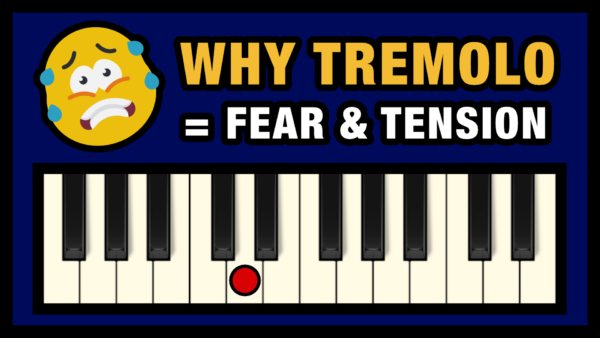 You have heard the tremolo effect in pretty much every film score ever, but why?
You have heard the tremolo effect in pretty much every film score ever, but why?
Because whenever the composer wants to elevate the tension or “fear factor”, this instrument articulation is the essence of tension in music.
What is a tremolo in music, and why does it induce tension and sometimes fear? Let’s find out, right now! =)
Why Tremolos add Tension in Music
If you think about what a tremolo means in practice, it is basically making a “trembling” effect, like when someone who is really scared and starts to shiver in fear.
And as with a tremble and shiver of fear, the music version “tremolo” will create the same type of feeling when you use it in your composition, for example a soundtrack.
So you can in fact simply connect the words: Tremolo = Tremble. Because that is the effect you are creating when using this articulation in music.
Now that you’ve learned why tremolo adds tension and a “trembling” mood. Let’s find out what the two versions of a tremolo effect are:
1. Tremolo from Rapid Repetitions
The first version is to repeat the same note rapidly. This type of tremolo is mainly used on bowed strings, such as the violin, by moving the bow back and forth very fast. You can also do a tremolo on a plucked string instrument like a guitar, by picking the same note extremely fast.
The rapid repetitions approach can in some cases be used on different notes, but is not the same as a thrill. In this case it is extremely fast repetitions (unlike a trill), and mainly on a tuned percussive instrument such as marimba, or even piano. In fact, a fast roll on a non-pitched percussion instrument can also have that tremolo type of emotion.
2. Tremolo from Volume Fluctuations
You can also create a tremolo effect by making a pulsing effect on the volume and intensity of the instrument or sound.
These are often created by special effects and controls, like effect pedals on guitars, or tremolo effect plugins or hardware.
A side note is that when you perform a vibrato, you can often feel a bit of tremolo effect from the fluctuations in volume and intensity of the tone for every “pulse” of the vibrato. So basically a vibrato is pitch fluctuations + volume fluctuations.

